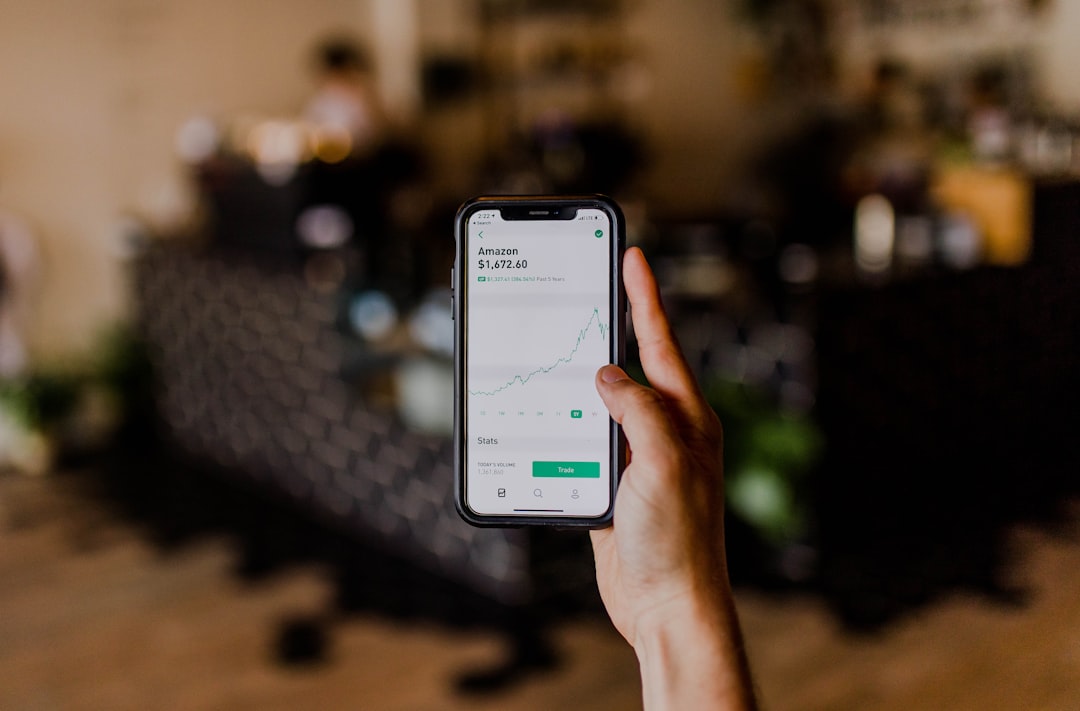DeFi, or decentralized finance, is a new and growing movement in the world of finance. It’s a way to provide financial services and products without relying on centralized institutions like banks. Instead, DeFi uses blockchain technology to create a decentralized network that enables users to transact, borrow, lend, and invest with each other directly, without intermediaries.
So, why is DeFi important? For starters, traditional banking systems have many shortcomings. They are often slow, expensive, and not accessible to everyone. These systems also require a high level of trust between parties, which can lead to issues like fraud and corruption. DeFi offers a solution to these problems by providing a more efficient, transparent, and inclusive financial system.
Moreover, DeFi is still in its early stages, meaning there is a lot of room for innovation and growth. As more people and businesses adopt DeFi, we will see new and exciting applications of this technology. From peer-to-peer lending to decentralized exchanges, there are countless possibilities for what DeFi can achieve.
Overall, DeFi represents a fundamental shift in the way we think about finance. It offers a more democratic, transparent, and accessible financial system that can benefit everyone. As we explore the world of DeFi in more depth, we will see just how powerful this technology can be.
The Problems with Traditional Banking
Traditional banking has been the backbone of our financial system for centuries. However, it has also been plagued with several inherent problems that have become evident in recent years. These shortcomings have contributed to the rise of decentralized finance or DeFi, which seeks to address these issues with an innovative approach.
One of the biggest problems with traditional banking is its centralized nature. Banks are owned and controlled by a select few, making them susceptible to corruption, manipulation, and misuse of power. This lack of transparency has resulted in several instances of financial frauds and scandals, eroding the trust of the public in the system.
Another problem with traditional banking is its limited reach. Banks are often inaccessible to people in remote locations or those without a stable income or credit history, leading to financial exclusion. Moreover, the high fees and transaction costs associated with banking services make them unaffordable for many individuals and businesses, particularly those in developing countries.
Traditional banks also offer limited options for financial products and services. They follow rigid protocols and have strict eligibility criteria, making it difficult for individuals and small businesses to access credit or other financial instruments. This lack of flexibility has created a significant gap in the market, which DeFi seeks to fill with its decentralized and open architecture.
Finally, traditional banking is susceptible to economic shocks and crises. The 2008 financial crisis demonstrated the fragility of the banking system and its inability to respond to external shocks effectively. This has led to a growing demand for a more resilient and adaptive financial system that can withstand such crises and continue to provide essential services.
Traditional banking has several shortcomings that have led to the rise of DeFi. By addressing these problems, DeFi offers a more transparent, accessible, and flexible financial system that can serve the needs of a wider range of individuals and businesses. It is an exciting development in the world of finance that has the potential to revolutionize the way we think about money, banking, and financial inclusion.
By addressing these problems, DeFi offers a more transparent, accessible, and flexible financial system that can serve the needs of a wider range of individuals and businesses.
How DeFi Works
Decentralized finance, or DeFi, represents a paradigm shift in the way we think about and interact with financial systems. At its core, DeFi is all about removing intermediaries and creating a trustless system that operates on the principles of transparency, democracy, and fairness.
In traditional banking, the power lies in the hands of a few centralized entities that control the flow of money and dictate the terms of financial transactions. With DeFi, however, power is distributed throughout the network of users who participate in the system, with no single point of control or failure.
One of the key features of DeFi is its use of blockchain technology, which allows for secure, tamper-proof transactions that are recorded on a decentralized ledger. This eliminates the need for third-party intermediaries such as banks or payment processors, reducing costs and increasing efficiency.
Another important aspect of DeFi is its use of smart contracts, which are self-executing contracts that enforce the terms of agreements between parties. This means that transactions can be executed automatically without the need for human intervention, further reducing costs and increasing speed and security.
DeFi also allows for a wide range of financial services and applications, including lending and borrowing, trading, derivatives, insurance, and more. These services are accessible to anyone with an internet connection, without the need for a bank account or other traditional financial infrastructure.
Overall, DeFi represents a new way of thinking about and interacting with finance, one that is more open, accessible, and democratic. By leveraging the power of technology and decentralization, DeFi has the potential to transform the financial landscape, making it more inclusive, efficient, and equitable for all.
Overall, DeFi represents a new way of thinking about and interacting with finance, one that is more open, accessible, and democratic.
DeFi Applications: Examples of DeFi Platforms and their Functions
Decentralized finance (DeFi) has gained significant traction in recent years, and the number of DeFi applications has exploded. These platforms are designed to offer a wide range of financial services, such as lending, borrowing, trading, and investing, without the need for intermediaries like banks. Here are some examples of DeFi platforms and their functions:
1. Uniswap: This is a decentralized exchange (DEX) that allows users to trade cryptocurrencies without the need for centralized intermediaries. It uses an automated market-making (AMM) system to determine prices and liquidity, making it easy for users to trade with each other.
2. Aave: This is a decentralized lending platform that allows users to borrow and lend various cryptocurrencies. It uses smart contracts to facilitate lending and borrowing, and borrowers can use their crypto holdings as collateral.
3. Compound: This is another decentralized lending platform that allows users to earn interest on their cryptocurrency holdings. Like Aave, it uses smart contracts to facilitate lending and borrowing, and users can earn interest on their crypto holdings by supplying liquidity to the platform.
4. MakerDAO: This is a decentralized stablecoin platform that allows users to create and trade stablecoins backed by collateral. Its stablecoin, DAI, is pegged to the value of the US dollar and can be used for a variety of purposes, such as payments and remittances.
5. Yearn.finance: This is a DeFi platform that offers yield farming and optimization services. It aggregates liquidity and optimizes yield farming strategies to maximize returns for its users.
These are just a few examples of the many DeFi platforms that are currently available. Each platform offers unique features and services, and users can choose the ones that best suit their needs. By using these platforms, users can take control of their finances and participate in a truly decentralized financial system.
Compound: This is another decentralized lending platform that allows users to earn interest on their cryptocurrency holdings.
Benefits of DeFi: Why DeFi is beneficial for users and the economy
Decentralized finance, or DeFi, is changing the way we think about banking and finance. By harnessing the power of blockchain technology, DeFi platforms are offering users a way to access financial services in a more transparent, secure, and efficient way. But what are the specific benefits of DeFi, and why is it important for users and the economy as a whole?
One of the main benefits of DeFi is that it eliminates the need for intermediaries. With traditional banking, intermediaries such as banks, payment processors, and credit agencies act as gatekeepers to financial services. This not only makes the process more complicated and time-consuming, but it can also be expensive, particularly for people in developing countries who may not have access to traditional banking services.
DeFi removes these intermediaries by using smart contracts, which are self-executing contracts with the terms of the agreement between buyer and seller being directly written into lines of code. This means that financial transactions can be processed automatically, without the need for a middleman. As a result, DeFi platforms can offer financial services that are faster, cheaper, and more accessible than traditional banks.
Another benefit of DeFi is its transparency. With traditional banking, it can be difficult to see where your money is going and how it’s being used. This lack of transparency can make it difficult for people to trust the banking system, particularly in the wake of the 2008 financial crisis.
DeFi platforms, on the other hand, are built on public blockchains, which means that anyone can see the transaction history of a particular address. This makes it easier for users to track their own transactions and ensure that their funds are being used as intended.
Finally, DeFi has the potential to unlock economic opportunities for people who have been excluded from traditional banking services. In many developing countries, people lack access to basic financial services such as bank accounts, loans, and credit lines. This can make it difficult for them to start businesses, invest in education, or build a better future for themselves and their families.
DeFi platforms offer a way to access these financial services without the need for a traditional bank account. This can be game-changing for people who have been excluded from the traditional banking system, allowing them to access the financial tools they need to create a better future for themselves and their communities.
DeFi is a new paradigm in banking and finance, offering users a more transparent, secure, and efficient way to access financial services. By eliminating intermediaries, increasing transparency, and unlocking economic opportunities, DeFi has the potential to transform the financial landscape, making it more inclusive and accessible for all.
Finally, DeFi has the potential to unlock economic opportunities for people who have been excluded from traditional banking services.
Challenges and Solutions in DeFi
As with any new technology, DeFi faces its fair share of challenges. One of the biggest challenges is that it is still a relatively new concept, and there is a lack of understanding among the general population. This lack of understanding can be a hindrance to adoption and growth.
Another challenge facing DeFi is the issue of security. Since DeFi platforms are decentralized and operate on a peer-to-peer network, security is a paramount concern. Any vulnerability in the system could potentially lead to a catastrophic loss of funds. This is why it is essential to have robust security measures in place to ensure the safety of users’ funds.
Scalability is another challenge that DeFi is currently facing. As more users begin to adopt DeFi platforms, the demand for transactions will increase, which could potentially lead to network congestion and slower transaction times. Developers are currently working on ways to increase the scalability of the network to accommodate this growth.
Interoperability is also a challenge facing DeFi. With so many different DeFi platforms and protocols available, there is a need for interoperability between them to ensure seamless integration and ease of use for users. Developers are working on solutions to this challenge, and we can expect to see more interoperability between DeFi platforms in the future.
Despite these challenges, there are solutions being developed to address them. Education is key in overcoming the lack of understanding of DeFi, and we can expect to see more resources and initiatives aimed at educating the public. In terms of security, developers are working on creating more secure protocols and implementing advanced security measures.
Scalability is also being addressed, with new protocols being developed to increase the network’s capacity. And as for interoperability, developers are working on creating standards and protocols that will allow for seamless integration between different DeFi platforms.
While there are certainly challenges facing DeFi, the solutions are also being developed. As the technology matures and more people become aware of its potential, we can expect to see significant growth in the DeFi ecosystem. The future of banking lies in DeFi, and we are excited to see how it will continue to evolve and innovate in the years to come.
As the technology matures and more people become aware of its potential, we can expect to see significant growth in the DeFi ecosystem.
Conclusion: The Future of Banking Lies in DeFi and Its Potential for Financial Inclusion and Innovation
As we’ve explored throughout this blog post, DeFi offers a revolutionary new approach to banking that is decentralized, transparent, and accessible to all. By leveraging blockchain technology, DeFi platforms are able to eliminate the need for intermediaries, reduce costs, increase efficiency, and empower users with greater control over their financial assets.
But DeFi is much more than just a technological innovation. It represents a fundamental shift in the way we think about money, value, and the role of financial institutions in our lives. At its core, DeFi is about creating a more equitable and inclusive financial system that is open to everyone, regardless of their background, location, or financial status.
This is particularly important in a world where traditional banking systems have failed to serve the needs of many marginalized populations. According to the World Bank, an estimated 1.7 billion adults worldwide lack access to formal financial services, such as bank accounts, credit, and insurance. This financial exclusion perpetuates inequality, limits economic growth, and undermines social progress.
DeFi holds the potential to change all of this. By removing barriers to entry and creating a more level playing field, DeFi can enable people around the world to participate in the global economy and leverage their financial assets to improve their lives.
Furthermore, DeFi allows for financial innovation that can potentially create new ways of financing projects and businesses that never existed before. Since DeFi is decentralized anyone can create a smart contract and start a financial project. This means that the power to create financial products is in the hands of the people, not just those that are part of the established financial institutions.
Of course, there are still many challenges that need to be addressed before DeFi can reach its full potential. Issues such as scalability, interoperability, security, and regulation must be carefully navigated in order to ensure that DeFi is both safe and sustainable. This means that the DeFi community must continue to collaborate, experiment, and innovate in order to address these challenges and build a better financial system for all.
In conclusion, DeFi represents a bold new vision for the future of banking, one that is decentralized, transparent, and accessible to all. By breaking down barriers and empowering individuals, we can create a more equitable and inclusive financial system that works for everyone. So let’s embrace the potential of DeFi, and work together to build a better future for all.





